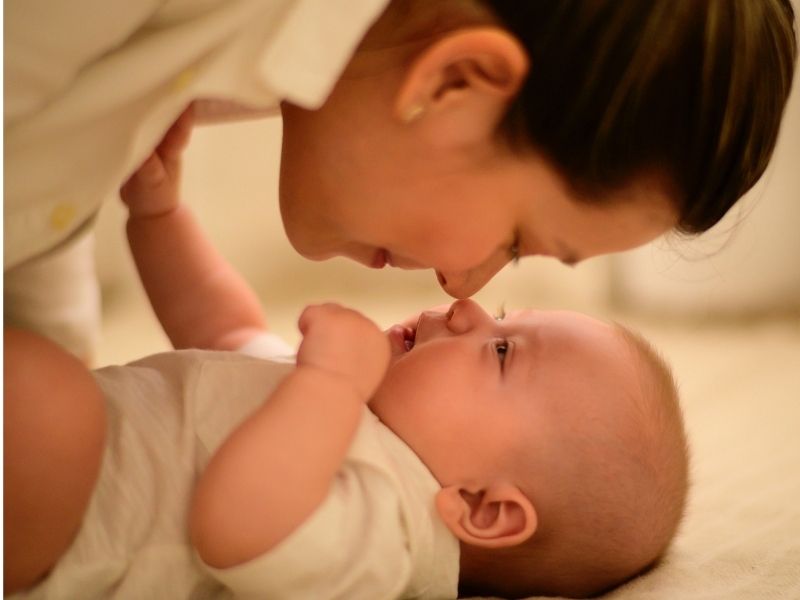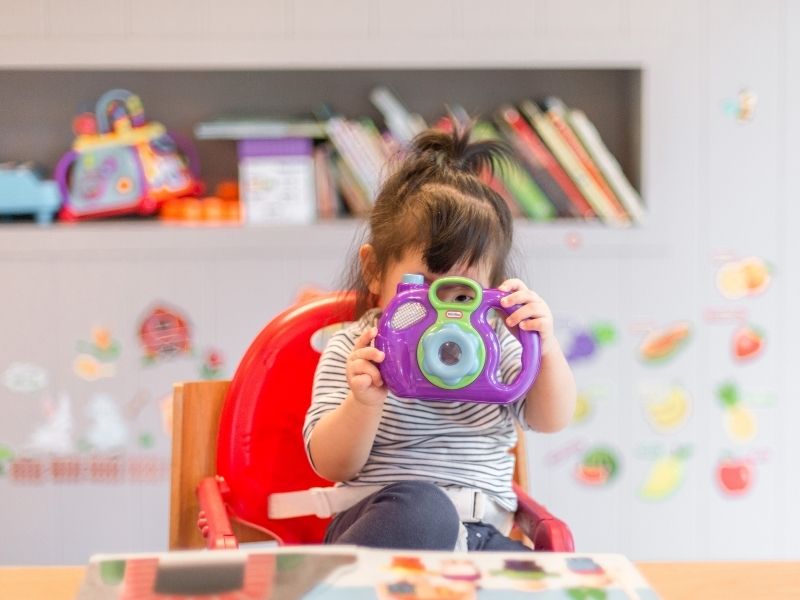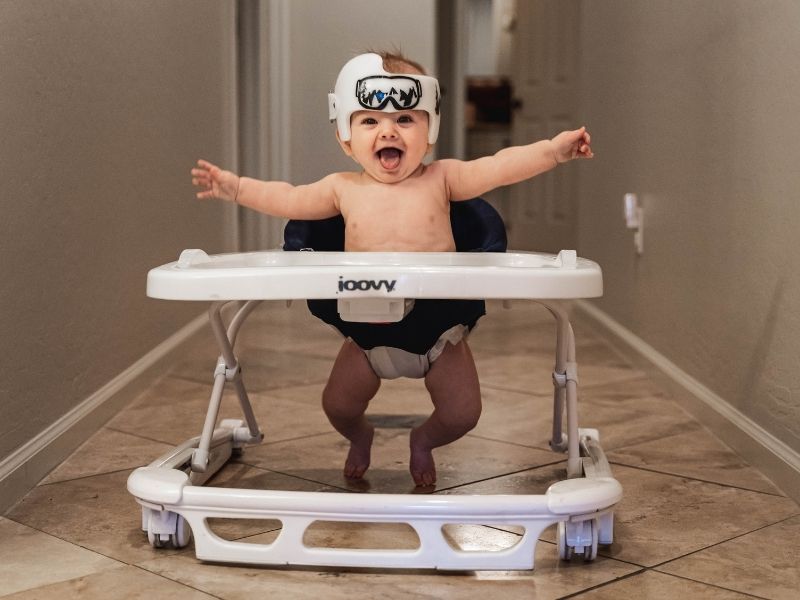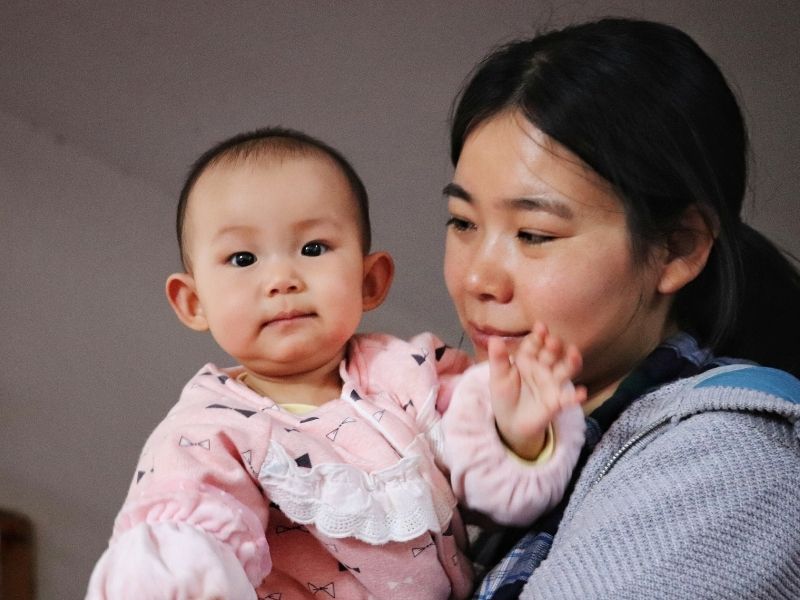It’s an exciting period for first-time parents to witness their baby’s gradual growth and development during the first year. That’s why we’ve put together the guide below, so you can know what to expect from your little one on a quarterly basis. From their first step to their first word, there are plenty of milestones to look forward to with your little one!
The First Three Months Of Baby’s Growth And Development

1. Communication Skills
Ensuring your newborn feels safe is especially crucial during this early stage, as they’ll be more willing to familiarise themselves with the world and people around them. Give them peace of mind through warm hugs and cuddles, or talking soothingly to them so they pick up on your tone of voice. They’ll probably smile quietly to themselves initially, but over time they’ll start responding to other faces, especially the ones they know. Your child will be able to recognise the sound of your voice and turn their head towards it. You may be hit with their first lovely signs of laughter as they continue to take in their surroundings.
2. Motor Skills
Your baby might be able to hold their head upright for a quick moment when laid down on their tummies. Eventually, they’ll turn and raise their head simultaneously when their neck muscles are more strengthened. To aid your child in building their neck strength, place them on their stomach for around one to five minutes. They’ll also close their hands in tight fists, and can move both their legs and arms at the same time. Once their arm and hand muscles are better developed, look out for the beginnings of their hand-eye coordination, as they reach for objects to hold.
Second Quarter Of Baby’s Growth And Development (4 To 6 Months)

1. Communication Skills
The few months leading up to the half-year mark will see your little one all ready for socialising and any form of interaction. They should listen when being spoken to and will respond (in the best way they can) while maintaining eye contact. This is because their personality is coming into shape, so they’ll also be more expressive in letting you know what they need. They may raise their arms above their head to show that they want to be carried, or cry to express displeasure when you leave the room. As for playtime, they’re particularly interested in musical toys or anything that makes sounds.
You’ll still hear the usual cooing and gurgling sounds whenever you talk or play with your baby, but they’ll also start making syllable or consonant sounds too (da, ma, ba etc.). It’s a phase in your baby’s growth development when they start picking up plenty of language skills, so they’ll be able to recognise certain words or sounds, though they won’t fully understand what they mean yet.
2. Motor Skills
Your little one’s motor skills are better evolved by this time. They now have the strength to roll over from side to side. That means you’ll have to take even more care in keeping them still on the changing table and bed. They should be able to reach for an object, hold it in one hand, and pass it to the other. Even when they’re lying on their tummies, they’re capable of stretching their hands out to nearby toys. If they’re on their backs, they’ll reach forward to play with their feet.
Apart from that, they’re also beginning to adjust themselves into a crawling position, and know how to use their hands to support themselves while sitting. Similarly, when standing with support, they can place their full weight onto their legs. They should be able to twist and move to their desired position by now as well.
Third Quarter Of Baby’s Growth And Development (7 To 9 Months)

1. Communication Skills
Your little one is beginning to understand the meaning behind words now, picking up on frequently used speech and imitating their sounds. They’ll recognise when they’re being called, and may engage in a two-way interaction. Besides the usual babbles and varying facial expressions, your child might start incorporating simple gestures to further express their feelings.
The more your child’s memory grows, the more they learn to create stronger bonds with a small number of people, preferring some company over others. However, they might also suffer from separation anxiety whenever you leave them. Playing a game of ‘hide-and-seek’ or ‘peek-a-boo’ is a good practice to help them get used to your temporary absence. It gives them a sense of assurance that you will always return to them.
2. Motor Skills
They’ll become quite mobile, as they begin to include movements with alternate leg and arm movements, like crawling. Their sense of balance has improved as well because they can sit stably without relying on support. When they reach for their toys to play with, they can do so without tumbling over. During tummy time, they can lift their head while using their arms and elbows to push them up. They’re even able to shift from their stomach to a sitting position, and can also roll over easily in both directions: from front to back and back to front.
Holding smaller objects is no longer a challenge for them, as they can pick things up using only their thumbs and fingers. They enjoy passing their toys to you and taking it back and love assembling rings, along with other early learning toys that include moving parts or levers. Shape sorters are good for your baby’s development, as they can learn how to form problem-solving skills by placing the objects in their rightful place.
The Last Three Months Of Baby’s First Year (10 To 12 Months)

1. Communication Skills
At this stage, your baby’s vocabulary should have extended to a couple of phrases, or even one or two words. Look out for the precious first words of “mama” and “dada”! Their babbling noises also are becoming more speech-like, turning out gibberish that sounds like a conversation. Overall, they’re able to understand and respond to basic instructions (they especially know when they’re being told no to) and will echo speech sounds. If you point at something, they will follow your gesture and pay attention to what you’re pointing at.
2. Motor Skills
This phase of your baby’s growth and development may just be the most exciting yet, as your child begins to take their first few steps. They can stand up all by themselves, clap their hands, and stay well balanced when seated down while throwing objects. Otherwise, they might use the furniture nearby to pull themselves up to stand, and move about (cruising). Additionally, they may shuffle around and alternate between different positions to survey their surroundings or obtain wanted toys. Their dexterity is more refined now too, so you can try giving them a spoon or a drinking cup to teach them to feed and drink by themselves.
Monitor Your Baby’s Growth And Development Phases To Ensure Your Little One Is Well And Healthy

We hope this guide list managed to offer some form of help in navigating through the phases of baby growth development. It’s important to note that not all babies are the same, and will mature at their own timing. However, if you feel your baby is lagging behind in their motor and communication skills, then do bring them to see your paediatrician and highlight your concerns.
We wish you the best of luck on your parenthood journey; be sure to enjoy the ride. If you’re also wondering what type of foods you can introduce to your toddler, then check out good first solid food options that we’ve compiled.
